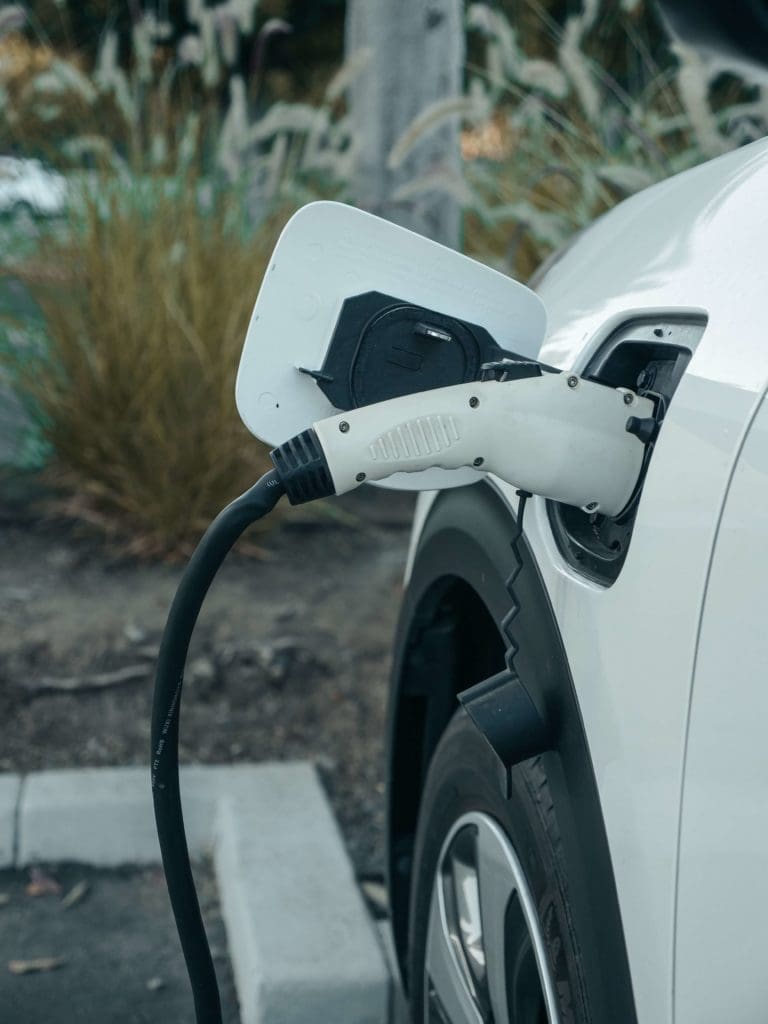
After months of silence, few expected the revival of a federal climate bill last week, which aims to tackle the dual issue of climate change and inflation.
The Inflation Reduction Act of 2022 is a scaled-back version of the Build Back Better bill, the Biden administration’s initial foray into climate legislation that ultimately failed to pass last year. We know that solving climate change means walking more and driving less. Building communities where people are able to get to jobs, services, friends, and family by walking is a key strategy in fighting climate change. How does the new bill score on this front?
Does the bill factor walkability into the formula for reducing emissions?
Largely, no. The bill takes a different approach. It largely focuses on cleaning up the energy sector, devoting 85% of spending ($369 billion) toward initiatives like decarbonizing power plants, replacing inefficient HVAC systems, and agricultural and forest restoration efforts. Climate analysts still estimate the new bill will reduce carbon emissions by roughly 40% by 2030. It’s a significant shift but just shy of the Biden administration’s goal to reduce carbon emissions by 50% by 2030.

In terms of transportation, the bill goes big on electric vehicles (EVs). It continues the existing $7,500 tax credit for the purchase of a new EV and adds a $4,000 credit for the purchase of a used one. EVs are one part of a climate solution, but alone won’t decarbonize the transportation sector quickly enough to meet climate goals. There are also other issues. Larger electric trucks and SUVs, also eligible for the credit, remain just as dangerous for pedestrians and cyclists as their gas counterparts. As it stands now, the bill has missed an opportunity to get sustainable vehicles on the road that are also safer.
There is a bright spot in the transportation legislation: the Neighborhood Access and Equity Grants. This program dedicates $3.4 billion to infrastructure projects that better connect communities. Like the $1 billion Reconnecting Communities program in the Bipartisan Infrastructure Law, the Neighborhood Access and Equity Grants can be used to dismantle highways that pollute and divide neighborhoods.
But that’s not all. Neighborhood Access and Equity Grants can also be used to build complete streets, multi-use trails, and regional greenways and projects that mitigate the effects of stormwater runoff and heat islands. Some of the eligible mitigations, like sound walls for highways, are on the low end of the spectrum for reparative projects, so advocates will have to keep up the pressure on agencies to develop more transformative solutions.
At the end of the day, the Neighborhood Access and Equity Grants would more than triple the federal funding available specifically for repairing the damage highways have caused to communities. Several of the program’s provisions make this intent clear: $1.1 billion is set aside for projects that assist disadvantaged communities and applicants for these funds must have plans to prevent displacement and keep current residents in place once improvements are made. The program also prohibits projects that add new travel lanes, so it can’t be used to fund a limited highway cap built as part of an even more damaging expansion. The program may be a small part of the climate bill, but it has the potential for outsized effect.
What’s not in the bill?
If you compare the Inflation Reduction Act to its predecessor, Build Back Better, you’ll notice a few transportation initiatives didn’t make it across. While electric cars still receive a tax credit, a credit for e-bikes was cut from the bill. The same goes for a $9.9 billion program to link transit to affordable housing and a $10 billion program for high-speed rail. This means that at the moment the Inflation Reduction Act does little to promote walkable, accessible, and resilient communities. Where Congress is silent, state and local and state efforts will have to lead the way.
Takeaways
The Inflation Reduction Act makes substantial headway toward reaching the United States’ climate goals, just not in the realm of transportation. It’s an important step and one that is sorely needed. But reforming our transportation systems to make them equitable, safe, and sustainable remains on the agenda. As it stands now, the bill is still far from law, so keep your eyes peeled for opportunities to tell federal lawmakers that walking more (and driving less) is a necessary climate solution.